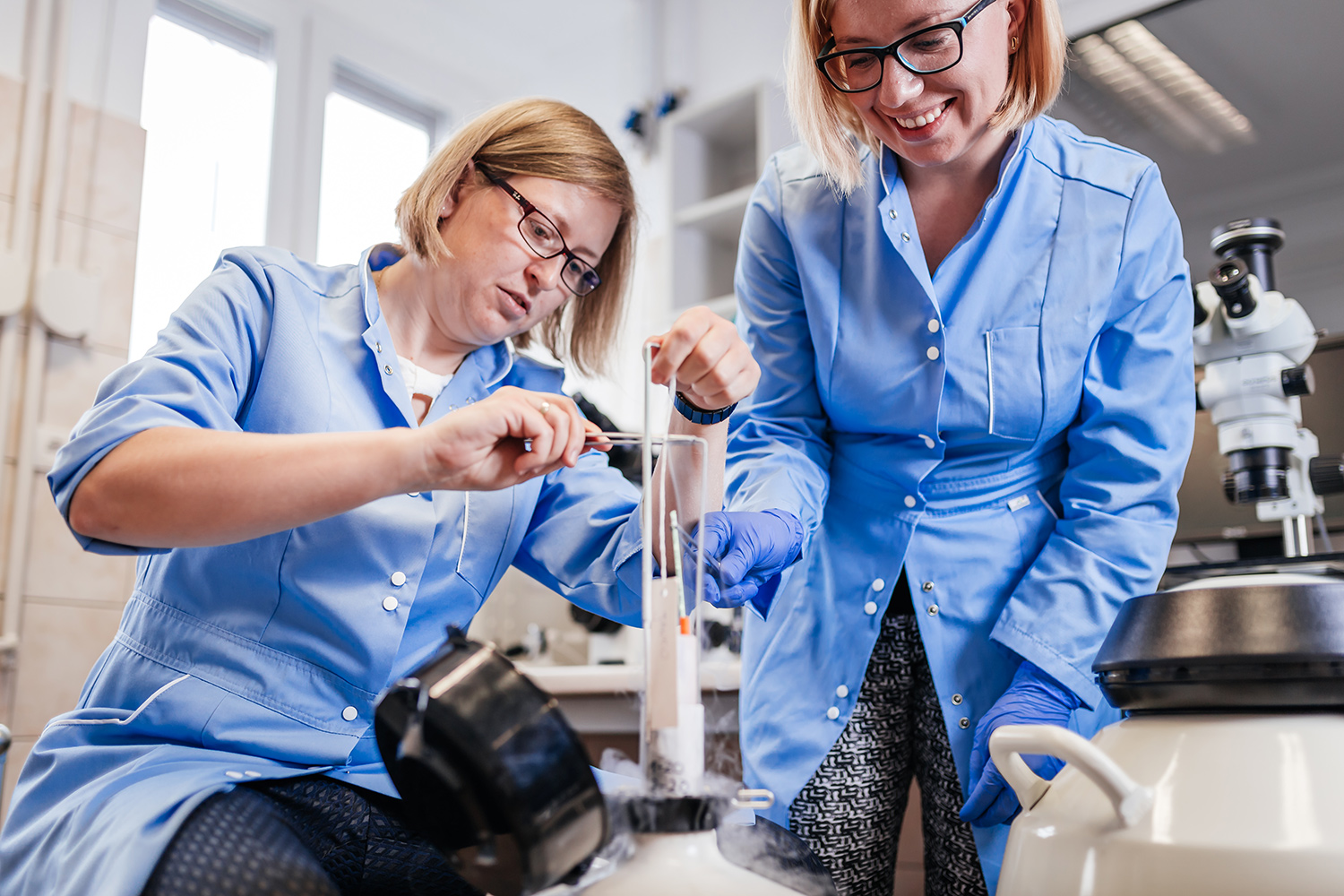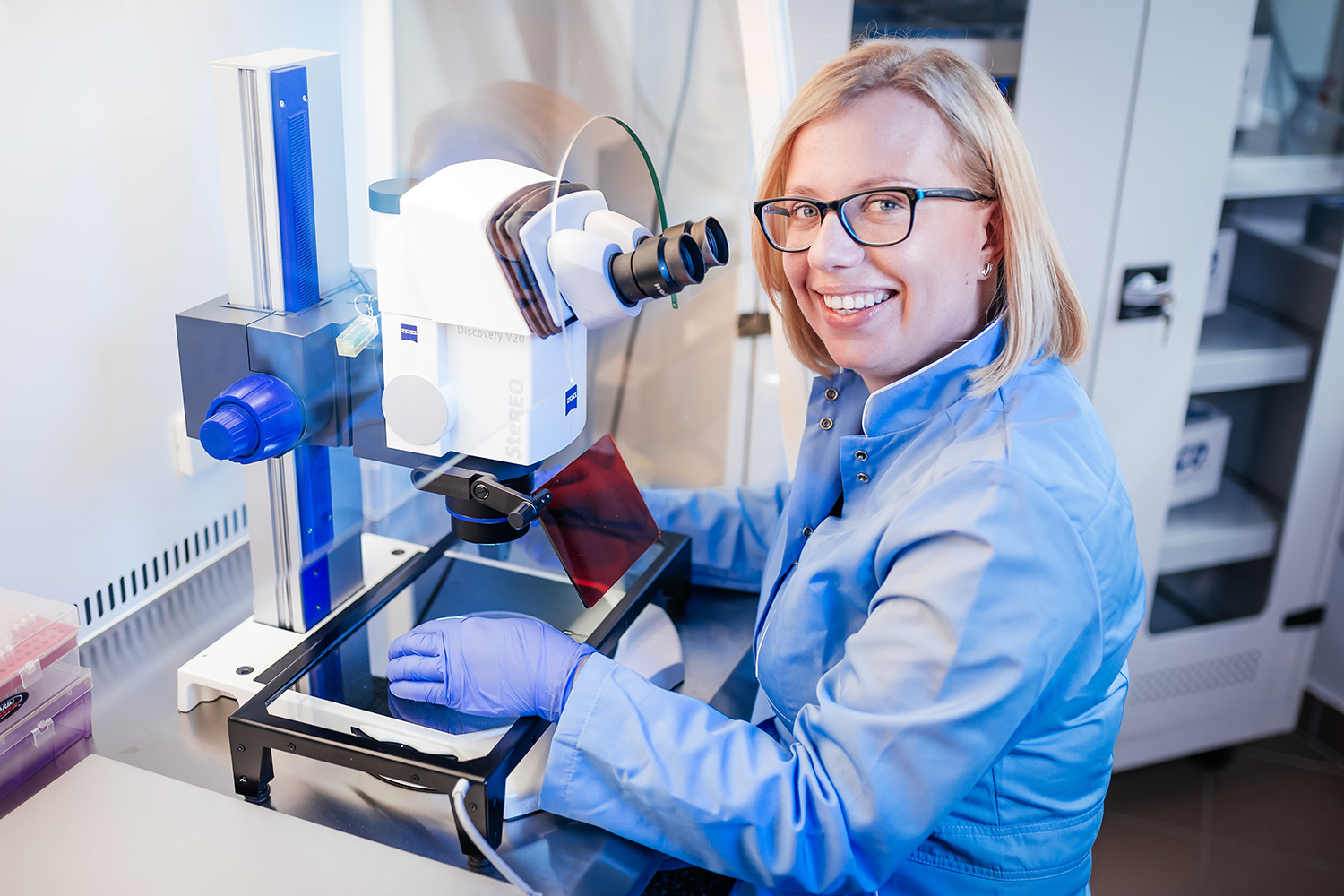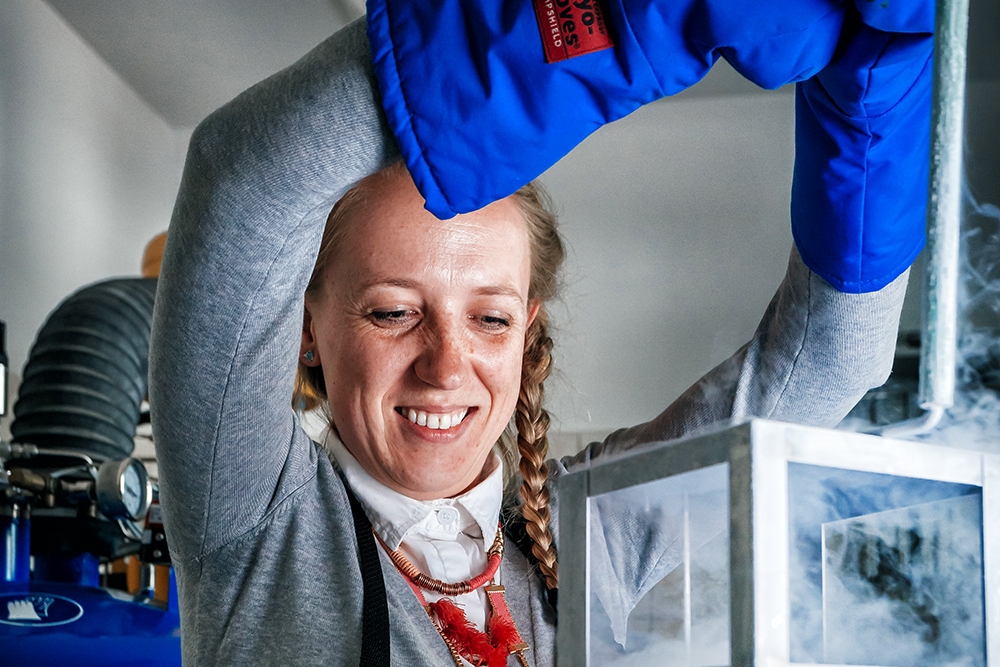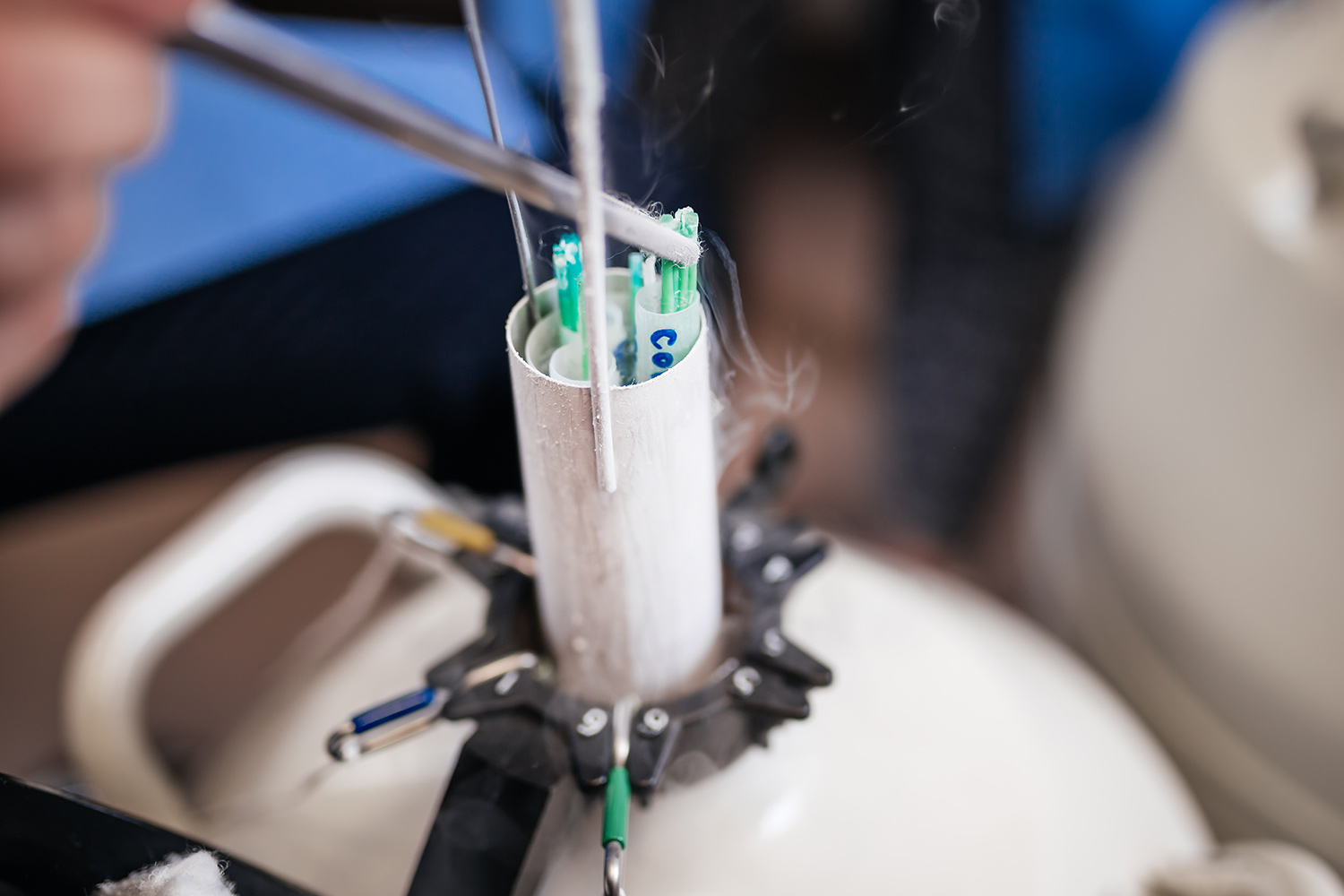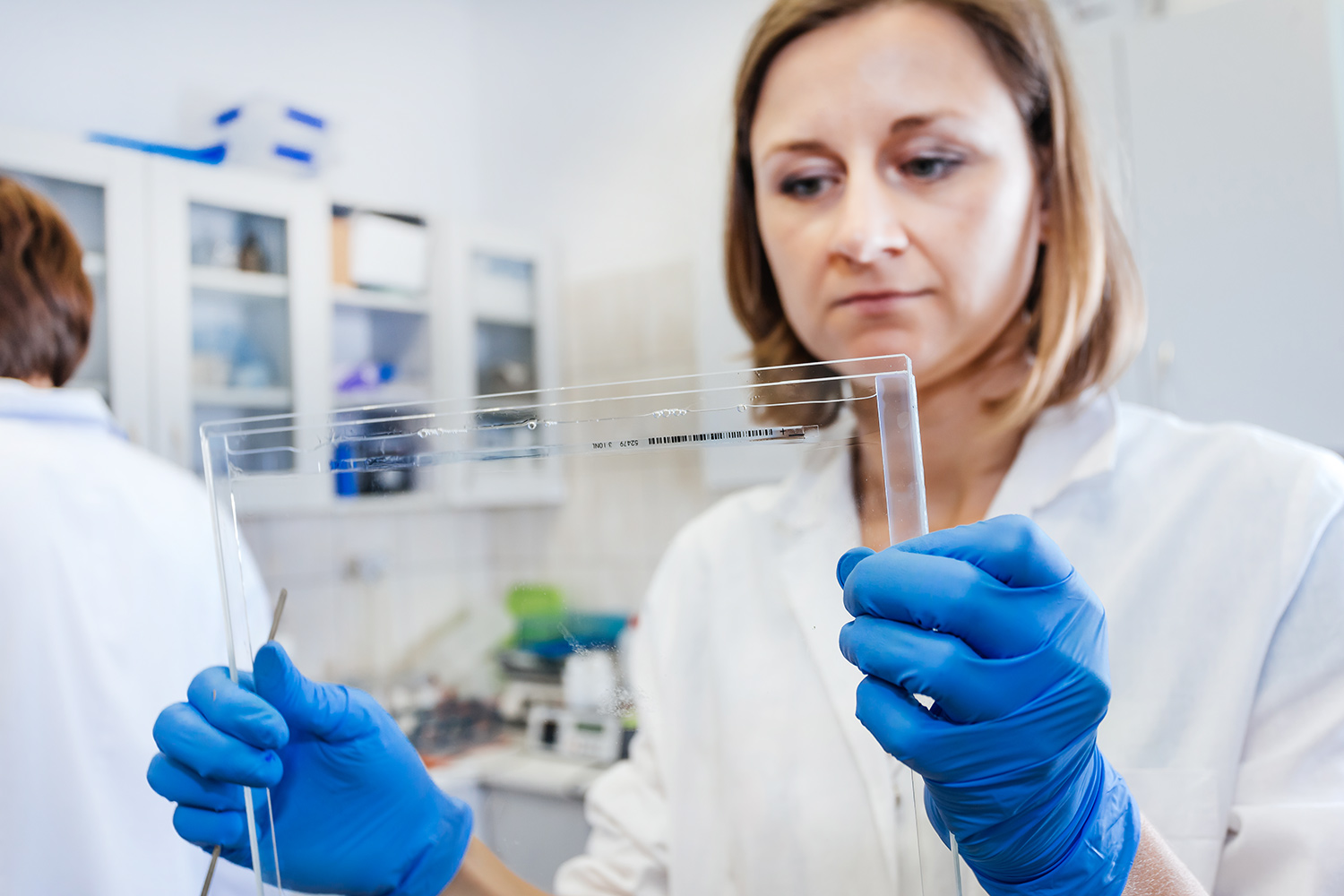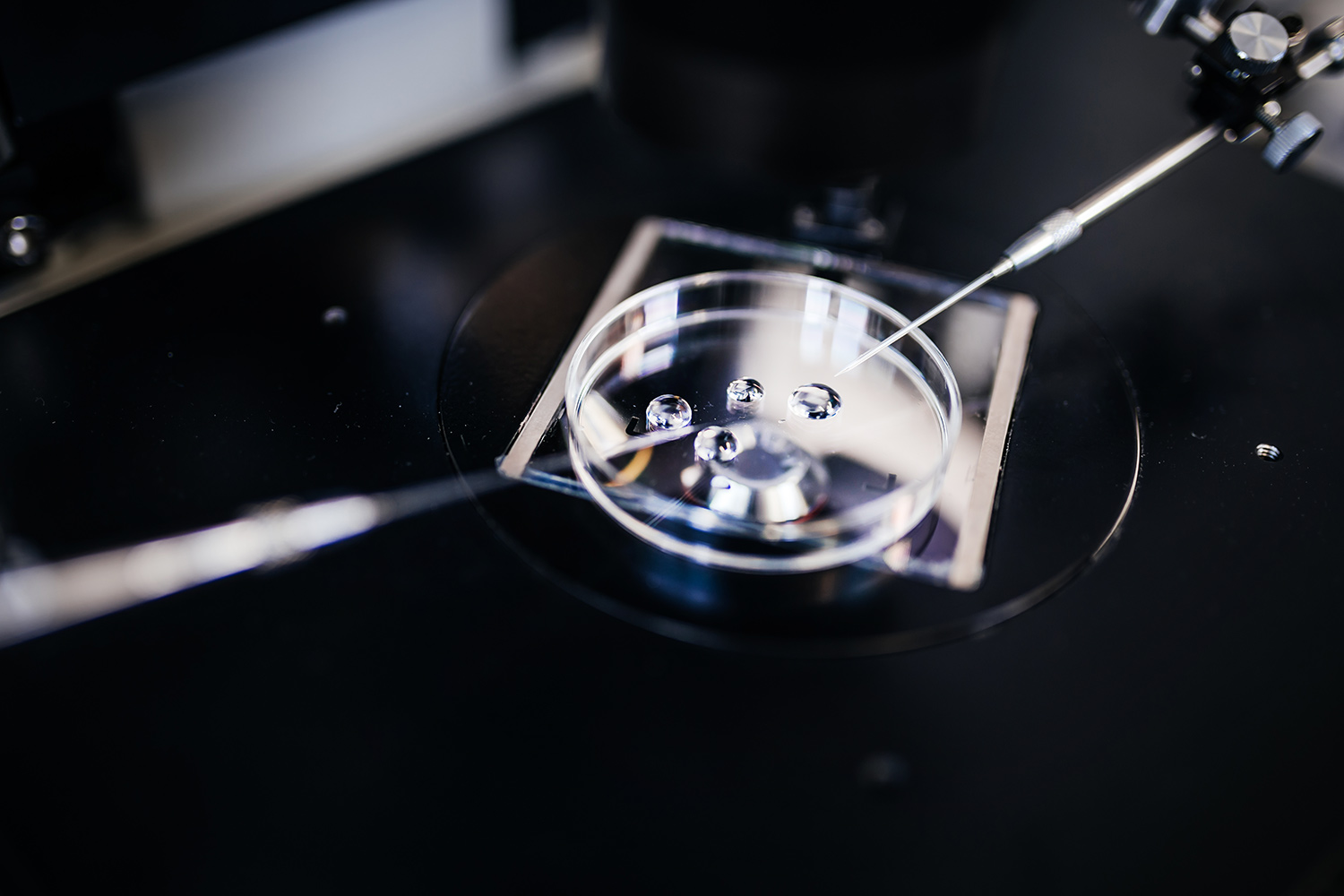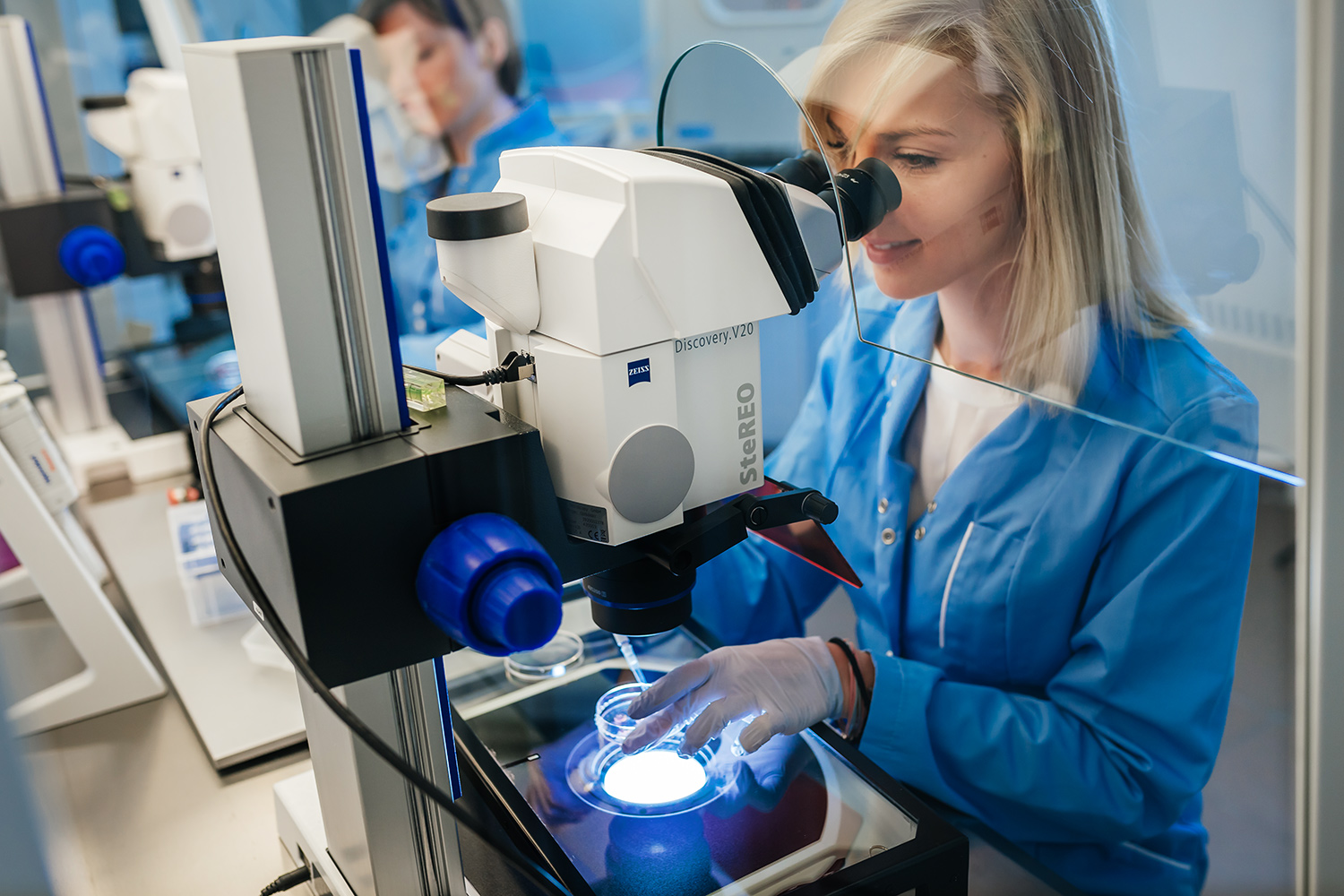Embryo Biology Team
The role of lysophosphatidic acid in the regulation of ovarian cycle and early pregnancy in cattle
- Lysophosphatidic acid is locally synthesized and secreted in the ovary, uterus and embryos in cattle.
- Lysophosphatidic acid exerts the protective action during early pregnancy in cattle, through:
- the stimulation of the synthesis of luteotropic PGE2 via the influence on mRNA expression for PGES in the endometrial stromal cells,
- the inhibition of the synthesis of luteolytic PGF2α via the influence on mRNA expression for PGFS in the endometrial epithelial cells,
- Lysophosphatidic acid exerts the luteotropic action during the luteal phase of the estrous cycle in the cow through:
- the stimulation of the steroidogenesis in the active CL,
- the stimulation of the E2 secretion in the bovine ovarian follicle during ovulation,
- During early pregnancy egzogenous LPA stimulated the concentration of P4 and PGE2 between day 15 and 18 post insemination. Therefore we can presume that during early pregnancy LPA influences on the synthesis of luteotropic hormones, protecting at this time active CL, which in turn can suport early pregnancy. We also documented the supportive role of endogenous LPA, synthesised in the reproductive organs, on the insemination rates in cattle.
- In the presence of LPA, the selected luteolytic factors such as nitric oxide (NO) and cytokines (TNFα and IFNγ) can not induce luteolysis in the bovine CL. During functional lutaolysis, LPA abrogated the inhibitory influence of NO and TNFα together with IFNγ on P4 synthesis. Moreover, LPA inhibited the NO and cytokine dependent structural luteolysis via the influence on the activity of the proapoptotic factors in the steroidogenic cells (caspase 3 activity, Bax/Bcl2 ratio, Fas/FasL and TNFα/TNFR1).
Basic and practical aspects of bovine reproduction in the context of the early development of embryos
LPA participation in mechanisms controlling oocyte maturation and preimplantation embryo development.
- LPA can be synthesized and act in both oocytes and cumulus cells surrounding the maturing oocyte, as well as bovine embryos at various stages of their development.
- LPA increased the percentage of metaphase II oocytes and thus the ratio of oocyte maturation and embryo quality.
- the supplementation of the maturation medium with LPA has an impact on blastocyst growth and differentiation and the occurrence of apoptosis in the embryos as well as enhances the number of embryos that reach the blastocyst stage
- maturation medium supplementation with LPA can improve oocyte quality during in vitro maturation by interfering with the expression of oocyte quality markers: follistatin (FST) and the growth and differentiation factor 9 (GDF9) in the oocyte and cathepsins (CTS) B, K, S and Z in the cumulus cells.
- supplementation of the maturation medium with LPA increased OCT4 and SOX2 mRNA abundance in bovine oocytes, indicating the supporting role of LPA in the pluripotency pathway during oocyte maturation.
- maturation medium supplementation with LPA directs glucose metabolism toward the glycolytic pathway; LPA increased glucose uptake by bovine COCs via augmentation of GLUT1 expression in cumulus cells as well as stimulating lactate production via the enhancement of PFKP expression in the cumulus cells.
- LPA through the influence on the expression of factors of epidermal growth factor superfamily, ie. amphiregulin (Areg), and epiregulin (Ereg) regulates the expansion of cumulus cells, which plays an important role in the proper maturation of the oocyte.
- LPA controls the survival of the bovine embryos on the early stages of their in vitro development.
- the supplementation of the culture medium with LPA during in vitro embryo culture, regulates the expression of genes connected with developmental potential: markers of pluripotency (OCT4 i SOX2), growth factors (IGF2R) and genes involved in apoptosis (BCL2 i BAX) in the blastocysts.
Embryo Biology Team
- Isolation and characterization of serine proteinase inhibitors of fish seminal plasma. Major inhibitors of carp and rainbow trout seminal plasma have been isolated and purified. Physicochemical properties of preparations were determined, such as molecular weight, isoelectric point and glycoprotein nature of their structure. Sequence and parameters analysis allowed identifying these inhibitors as serpin of α1-antiproteinase type. The inhibitors are probably involved in the protection of spermatozoa and tissues of reproductive track against proteolytic attack, for example from microorganisms.
- Identification of major proteins of carp seminal plasma. Transferrin and serine proteinase inhibitors have been found as major proteins of seminal plasma for the first time for fish. An efficient method for the isolation of transferrin (Tf) has been elaborated and polyclonal antibodies for this protein have been obtained. A relationship between transferrin polymorphism and CASA parameters has been found, which indicates involvement of Tf in the mechanism of sperm motility. These proteins are part of the non-specific humoral defense mechanism. Therefore, it may be suggested that the role of seminal plasma proteins is the protection of spermatozoa against the proteolytic attack.
- Ovarian fluid has been found to play a significant role in motility enhancement and pH was identified as a primary determinant of this role.
- Characterization of proteolytic enzymes and serine proteinase inhibitor of turkey seminal plasma has been elaborated. By using electrophoretic methods the presence of two metalloproteinases, six serine proteinases and three serine proteinase inhibitors has been demonstrated in turkey seminal plasma. Metalloproteinases and the inhibitor of low electrophoretic migration rate appeared to be present both in blood and the reproductive system of birds. Serine proteinases and inhibitors with moderate and fast migration rate were present in the reproductive system only. Main inhibitors of seminal plasma belong to the Kazal family. Serine proteinase inhibitors may be involved in the inactivation of serine proteinases (including acrosin) and therefore may be capable of protecting spermatozoa and reproductive tissues against proteolytic degradation. Inhibitors of Kazal family have been isolated and characterized and cDNA sequence of acrosin has been determined.
- Research on the improvement of breeding and reproduction methods of black and wood grouse has been conducted to determine chances for introduction of these birds to the environment without loss of their biodiversity. Semen characteristics of black and wood grouse has been obtained for the first time.
Applied research
Most of the studies were feasible through close cooperation with fish farmers. A simple test based on analysis of water turbidity for estimation of the quality of rainbow trout eggs has been elaborated. Modification of the fertilization procedure has been proposed in order to increase the effectiveness of fertilization. Regarding experiments aimed at improving sperm quality evaluation, usefulness of the comet assay for estimation of fish sperm DNA fragmentation has been demonstrated. These results are important for the optimization of genome manipulations in fish, such as gynogenesis (production of progeny from maternal DNA).
Molecular Andrology Team
- Elaborating methods of acrosin activity measurement in the sperm of boar, turkey and sturgeon without the need of extraction procedure
- Determination of the influence of methylxanthines on boar spermatozoa and seminal plasma alkaline phosphatase activity and elaborating effective cryopreservation methods of sturgeon sperm.
- Our lab was the first which isolate and characterize arylsulphatase from Russian sturgeon and acid phosphatase from spermatozoa of rainbow trout Siberian sturgeon.
- As a result of achievements accomplished by the Department in fish sperm cryopreservation improvement, in 1999 the Institute has been chosen as a place of establishing the Polish Fish Sperm Bank founded by the Ministry of Agriculture and Rural Development.
Scientific achievements of the Department Staff hale been appreciated with national awards as well as Institute Director’s awards and Rector’s of the University of Warmia and Mazury in Olsztyn.

